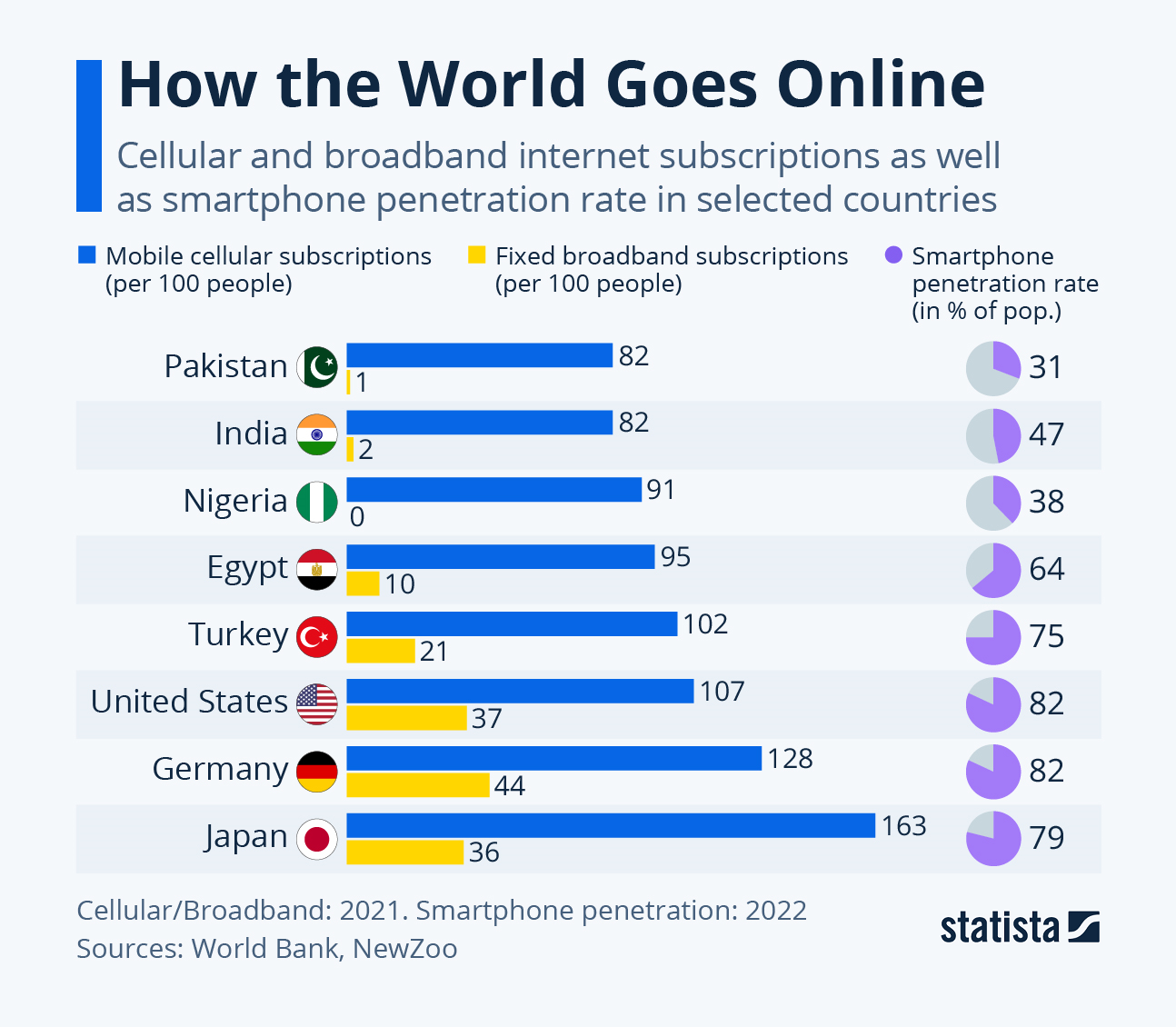The World Bank recently released statistics showing that access to internet services on both fixed and mobile devices still varies greatly around the globe.
The most recent World Bank figures have shown considerable differences in internet availability throughout the globe, highlighting the ongoing digital divide between distinct geographic locations. In terms of widespread connectivity via landlines and mobile internet, many developing countries still need help to catch up to wealthy countries.
These statistics illustrate the importance of solving the issue of unequal availability of ICTs (information and communication technology) on a global scale. According to the World Bank, first-world nations have a large excess of mobile cellular customers relative to their populations.
However, the significant discrepancy in internet availability becomes much more evident when considering countries like Pakistan, India, and Nigeria. These countries have barely 80–90 mobile cellular subscriptions per 100 individuals, although they have sizable populations.
This difference hinders their capacity to connect and communicate clearly and presents problems for both social and economic advancement. The situation grows more serious in countries like South Sudan, Mozambique, and the Democratic Republic of the Congo. In some countries, there are as low as 30–50 lines per 100 people with access to mobile cellular subscriptions.
It is difficult to advance in enterprise, healthcare, or education because of this significant lack of connectedness, exacerbating existing social and economic inequality. Similarly, Afghanistan, Venezuela, and Laos need help to provide adequate access to mobile cellular subscriptions, with approximately 60 subscriptions per 100 people.
This limited availability prevents millions of individuals from harnessing the full potential of digital technologies, including accessing vital information, participating in e-commerce, and connecting with global networks.
It is worth noting that not all individuals in developing nations who possess a mobile phone own a smartphone. NewZoo reports penetration rates as low as 30-40 per cent in Pakistan and Nigeria and 47 per cent in India, leaving a significant portion of the population reliant on feature phones.
Remarkably, some of these devices are 4G-enabled, providing basic connectivity and access to essential services. While sharing mobile phone subscriptions is a widespread practice in economically disadvantaged countries, this phenomenon extends globally when it comes to landline internet access.
Broadband connections have reached unprecedented levels, with as high as 40-50 lines per 100 people in Europe and East Asia and a comparable rate of 37 in the United States. Unfortunately, the situation sharply contrasts in numerous developing nations, where broadband availability and connections are nearly nonexistent.
The discrepancies in global internet access underscore the urgent need for concerted efforts to bridge the digital divide. The World Bank statistics serve as a reminder that encouraging global connection, empowering individuals, and supporting socio-economic development all depend on everyone having equitable access to technology and digital resources.
Governments, non-governmental organisations, and businesses must work together and contribute to creating infrastructure, legal frameworks, and educational programmes that put narrowing the digital divide first. By doing this, we can enable information exchange, empower people and communities, and realise the revolutionary promise of the digital era.
H/T: Statista
Read next: 48% of Consumer Say They’re Ready to Leave Gas-Powered Cars Behind
by Arooj Ahmed via Digital Information World

No comments:
Post a Comment